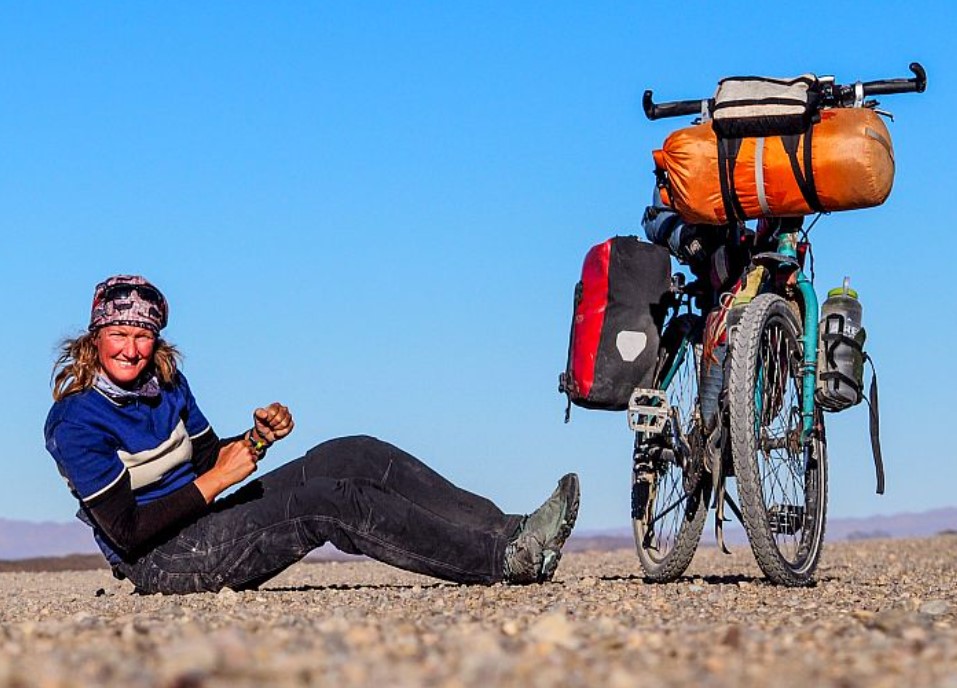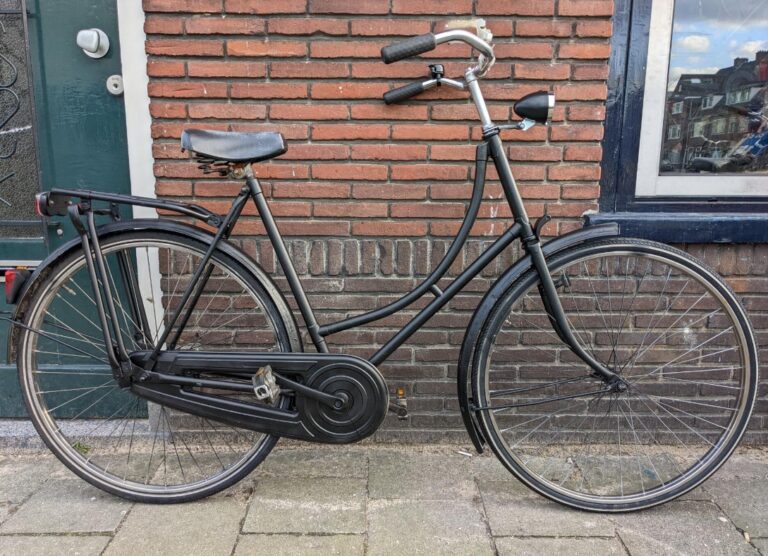How To Prepare For A Bike Tour? All You Need To Know
This article aims to provide information on How To Prepare For A Bike Tour? Embarking on a bike tour is an adventure that promises both exhilaration and challenges. Preparing for such a journey requires careful planning, from physical conditioning and selecting the right gear to plotting your route and ensuring nutritional needs are met. Whether you’re a seasoned cyclist or new to long-distance biking, the key to a successful tour lies in meticulous preparation and an eagerness to embrace the open road.
Key Takeaways
- Physical Preparation: Start with consistent training and condition your body for long rides.
- Gear and Equipment: Invest in a reliable bike, necessary repair tools, and comfortable clothing.
- Route Planning: Research and select routes that match your skill level and interests.
- Nutrition and Hydration: Plan your meals and water intake to sustain energy levels throughout the tour.
- Safety Measures: Prioritize safety with a well-thought-out emergency plan and necessary gear.
How To Prepare For A Bike Tour?
To prepare for a bike tour, start with physical training that includes both endurance and strength workouts, select a suitable bike and gear for the terrain, plan your route carefully considering distance and accommodations, and ensure proper nutrition and hydration.
Adequate preparation also involves familiarizing yourself with bike maintenance and safety protocols to handle unexpected situations on the road.

Physical Preparation
Physical readiness is the cornerstone of a successful bike tour. Begin with regular cycling sessions that gradually increase in distance and intensity.
This not only builds stamina but also acclimates your body to long periods in the saddle. Incorporating cross-training activities like swimming or running can enhance your overall fitness and resilience, making the bike tour more enjoyable and less taxing.
Training Regimen
Craft a training schedule that progressively intensifies over weeks or months leading up to your tour. Start with shorter rides, and gradually incorporate longer distances.
It’s not just about the miles; include varied terrain to mimic the conditions you’ll face on your journey. Rest days are equally important to allow your body to recover and prevent overuse injuries.
Building Endurance
Endurance is key in bike touring. Alongside physical training, focus on mental preparation. Long rides can be as much a mental challenge as a physical one. Practice mindfulness and resilience techniques to keep your spirits high and push through tough segments of your tour.
Gear and Equipment
The right gear can make a significant difference in your bike tour experience. A reliable touring bike that’s fit for the distance and terrain is essential. Equally important are comfortable cycling clothes, a helmet, gloves, and appropriate footwear. Don’t forget the repair kit for on-the-road maintenance.
Choosing the Right Bike
Select a bike that suits your tour’s demands. Touring bikes are designed for long distances and heavy loads, offering a comfortable ride. Ensure it’s properly fitted to your body to avoid discomfort or injuries.
Packing Essentials
Packing wisely is a skill. Aim for lightweight and multi-purpose gear. Essential tools include a basic repair kit, spare tubes, a pump, and a multi-tool. For clothing, prioritize comfort and layering options for varying weather conditions. Waterproof panniers or bags will protect your belongings from the elements.
Route Planning
Route planning is more than just picking a destination. It involves understanding the terrain, distance, and available amenities like campsites or hotels. Research is key to a smooth journey. Use resources like cycling maps, online forums, and local cycling clubs to gather information.
Selecting Your Route
Choose a route that aligns with your skill level and interests. Consider the scenery, cultural sites, and type of roads or trails you’ll be traversing. Safety should be a top priority, so look for routes with less traffic or dedicated cycling paths.
Familiarize yourself with the route in advance. GPS devices and traditional maps are invaluable tools for keeping you on track. Plan your stops for rest, meals, and sightseeing, keeping flexibility in mind for spontaneous discoveries or changes due to weather and health.
Nutrition and Hydration
Proper nutrition and hydration are vital for sustaining energy and enjoyment throughout your bike tour. Plan your meals and snacks to fuel your body for the demands of the day. Hydration is equally important, especially in warm weather or on strenuous routes.
Meal Planning
Focus on a balanced diet rich in carbohydrates for energy, proteins for muscle repair, and fats for endurance. Pack non-perishable snacks for easy access and research local eateries along your route for a taste of local cuisine.
Staying Hydrated
Carry enough water for the day’s ride, especially in areas where refills may not be readily available. Electrolyte supplements can help replace salts lost through sweat and prevent cramping.
How Do I Prepare My Body For A Bike Ride?
Preparing your body for a bike ride involves a combination of physical conditioning, nutrition, and rest. Start with a training regimen that gradually increases in intensity and duration to build your endurance and strength. Incorporate both on-bike and off-bike exercises into your routine.
On-bike training should focus on building up your riding distance progressively, while off-bike exercises like strength training, particularly for your core and legs, improve overall fitness and help prevent injuries.

Nutrition plays a critical role in preparation. Focus on a balanced diet rich in carbohydrates for energy, proteins for muscle repair, and fats for long-lasting fuel. Hydration is equally important, so drink plenty of fluids before, during, and after rides.
Rest and recovery are as crucial as the training itself. Ensure you get adequate sleep and incorporate rest days into your training schedule to allow your body to recover and strengthen.
This approach ensures that your body is well-prepared, not just for the physical demands of a bike ride but also for enjoying the experience to its fullest. For comprehensive training plans and nutrition advice, resources such as British Cycling’s Insight Zone provide valuable guidance from cycling experts and professionals.
How Many Miles Should You Go On A Bike Tour A Day?
The ideal daily mileage on a bike tour depends on several factors, including your fitness level, the terrain, and your overall goals for the tour.
For most recreational cyclists, a range of 40 to 60 miles per day is a comfortable and manageable distance. This allows for a pace that is enjoyable yet challenging, with ample time for breaks, sightseeing, and exploring the areas you’re riding through.

However, for more experienced cyclists or those seeking a challenge, pushing the distance to 70-100 miles per day is feasible. It’s essential to listen to your body and adjust your daily mileage based on how you feel and the conditions you’re riding in. Remember, the goal of a bike tour is often to enjoy the journey itself, not just to cover ground.
Adjusting daily goals based on terrain is also critical. Mountainous or hilly routes will reduce your average mileage compared to flat terrain. Planning with flexibility allows you to adapt to these variables and ensures a more enjoyable experience.
Adventure Cycling Association provides resources and tools for planning bike tours, including tips on determining daily mileage based on various factors.
Did You Train Before Going Up For Bike Tours?
Training before embarking on a bike tour is highly recommended to ensure an enjoyable and successful experience. The type and intensity of training should match the demands of your specific tour.
For a tour involving long distances, hilly terrain, or consecutive days of riding, a structured training plan that gradually increases in intensity can help build the necessary endurance and strength.
Cyclists often begin training months in advance, incorporating longer rides into their routine, practicing on terrain similar to what they’ll encounter on the tour, and including rest days to allow for recovery. Training is not just about physical preparation; it’s also an opportunity to test gear, nutrition, and hydration strategies.
For those new to bike touring, or if it’s been a while since your last tour, starting with shorter, easier rides and progressively increasing the challenge is a practical approach. This gradual buildup helps in acclimating your body to the rigors of cycling day after day, which is a common scenario on bike tours.
Conclusion
In conclusion, preparing for a bike tour is a multifaceted process that demands attention to detail in physical readiness, equipment, route planning, and nutrition.
By taking the time to thoroughly prepare, cyclists can ensure a rewarding and enjoyable experience, fully immersing themselves in the landscapes and communities they encounter.
A well-prepared bike tour opens the door to adventure, personal growth, and the simple joy of cycling through the world’s vast and varied beauty.
People Also Ask
Can I do a bike tour alone?
Yes, solo bike touring can be a rewarding experience, offering freedom and flexibility. However, it requires careful planning, self-sufficiency, and awareness of safety. Build your confidence with shorter solo rides, ensure you’re well-prepared with gear, knowledge, and skills for emergency repairs, and stay connected with friends or family about your whereabouts and plans.
How do I deal with unexpected challenges during the tour?
Flexibility and a positive mindset are key to dealing with unexpected challenges. Have contingency plans for bad weather, mechanical issues, or health problems. Stay informed about local conditions, and don’t hesitate to adjust your route or schedule. Build in rest days and be prepared to seek local assistance if necessary.
How can I stay safe on my bike tour?
Prioritize visibility with reflective gear and lights. Wear a helmet, follow traffic laws, and ride defensively, especially in areas with vehicle traffic. Inform someone of your route and expected return, carry identification and emergency contact information, and know the basics of first aid. Be prepared for weather changes by carrying appropriate clothing and shelter.
What nutrition and hydration tips should I follow?
Focus on a balanced diet rich in carbohydrates for energy, proteins for muscle repair, and fats for sustained effort. Eat small, frequent meals and snacks to maintain energy levels. Hydrate regularly, drink water before you feel thirsty, and consider electrolyte supplements on hot days or during intense rides to replenish salts lost through sweat.

Welcome to the exhilarating world of Matt Rex, a professional car racer turned renowned vehicle enthusiast. Immerse yourself in his captivating blog as he shares heart-pounding adventures, expert reviews, and valuable insights on cars, trucks, jets, and more. Fuel your passion for speed and discover the beauty of vehicles through Matt’s engaging stories and meticulous expertise. Join the ever-growing community of enthusiasts who find inspiration and expert advice in Matt Rex’s blog—a digital hub where the thrill of speed meets the pursuit of knowledge.







